Landscape Photo Size

Table of Contents
Landscape Photo Size: A Comprehensive Guide for Professionals and Enthusiasts
Choosing the right landscape photo size is crucial for maximizing impact and ensuring your images look their best, whether displayed online or printed. This guide delves into the ideal dimensions, resolutions, and file formats for various applications, empowering you to present your stunning landscapes effectively.
Understanding Aspect Ratios: The Foundation of Landscape Photography
Before diving into specific sizes, grasping aspect ratios is essential. Aspect ratio refers to the proportional relationship between the width and height of an image. Common aspect ratios in landscape photography include:
- 3:2: A classic and widely used ratio, offering a good balance between horizontal expanse and vertical detail. Many DSLRs and mirrorless cameras default to this.
- 16:9: Popular for widescreen displays and videos, offering a more panoramic feel.
- 4:3: A more traditional square-ish ratio, offering a more balanced feel but less emphasis on horizontal space.
- 1:1 (Square): Provides a symmetrical composition, often used for artistic expression or social media platforms.
Choosing the right aspect ratio depends on your artistic vision and the intended platform for your image. A vast, sweeping landscape might benefit from a 16:9 aspect ratio, while a more intimate scene might suit a 3:2 or even a square format.
Optimal Dimensions for Different Platforms
The ideal dimensions for your landscape photos are highly dependent on where you intend to use them. Here's a breakdown:
Web Display:
- Social Media (Instagram, Facebook, etc.): While these platforms allow various sizes, aiming for at least 1080 pixels on the longer side generally ensures good quality. However, always check each platform's specific guidelines for optimal display.
- Websites and Blogs: For online display, aim for a resolution of at least 1920 pixels wide. Higher resolutions are always beneficial, especially for larger screens. Consider using responsive images that adjust to various screen sizes.
- Stock Photo Websites: Requirements vary depending on the website. Check each site's guidelines carefully before uploading your images. Larger files are generally preferred.
Print Sizes:
Print sizes significantly impact the required resolution. A higher resolution is crucial for larger prints to prevent pixelation. Here are some common print sizes and recommended resolutions:
- 8x10 inches: 2400 x 3000 pixels (300 DPI)
- 11x14 inches: 3300 x 4400 pixels (300 DPI)
- 16x20 inches: 4800 x 6000 pixels (300 DPI)
- 20x30 inches: 6000 x 9000 pixels (300 DPI)
Remember: DPI (dots per inch) refers to the resolution of the print. 300 DPI is generally considered the minimum for high-quality prints.
File Formats:
The choice of file format significantly affects image quality and file size.
- JPEG: A widely used format offering a good balance between image quality and file size. Ideal for web use and most print applications. Lossy compression may reduce quality slightly.
- TIFF: A lossless format that preserves image quality perfectly, making it suitable for archival purposes or high-quality printing where the best possible quality is essential. However, TIFF files are significantly larger than JPEGs.
- RAW: This format captures the maximum amount of data from your camera's sensor. It offers the greatest flexibility for editing but requires specialized software. Raw files are extremely large.
Choosing between these formats depends on your needs and priorities: if file size is important, use JPEG; if quality is paramount, consider TIFF or RAW.
Keyword Optimization and SEO Best Practices
To improve this article's search engine ranking, we've integrated several relevant keywords organically, including: landscape photo size, aspect ratio, image resolution, DPI, JPEG, TIFF, RAW, print size, web display, social media, stock photos. We've also used header tags (H2, H3) to structure the content logically, aiding both readability and SEO. Further off-page SEO strategies would include building high-quality backlinks from relevant websites and promoting this article on social media.
By following these guidelines and understanding the nuances of landscape photo sizing, you can ensure your breathtaking images are presented in their best possible light, achieving both aesthetic impact and online visibility.

Thank you for visiting our website wich cover about Landscape Photo Size. We hope the information provided has been useful to you. Feel free to contact us if you have any questions or need further assistance. See you next time and dont miss to bookmark.
Featured Posts
-
Uk Emergency Alert System Notification Timing
Jan 18, 2025
-
Comfortable Living Room Sets
Jan 18, 2025
-
Matt Black Bathroom Faucet
Jan 18, 2025
-
Prefab Bathroom
Jan 18, 2025
-
Johnston Casuals Furniture Inc
Jan 18, 2025